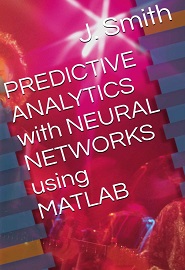
English | 2017 | ISBN: 978-1544169613 | 242 Pages | EPUB, PDF (conv) | 11 MB
Predictive analytics encompasses a variety of statistical techniques from predictive modeling, machine learning, and data mining that analyze current and historical facts to make predictions about future or otherwise unknown events. In business, predictive models exploit patterns found in historical and transactional data to identify risks and opportunities. Models capture relationships among many factors to allow assessment of risk or potential associated with a particular set of conditions, guiding decision making for candidate transactions. The defining functional effect of these technical approaches is that predictive analytics provides a predictive score (probability) for each individual (customer, employee, healthcare patient, product SKU, vehicle, component, machine, or other organizational unit) in order to determine, inform, or influence organizational processes that pertain across large numbers of individuals, such as in marketing, credit risk assessment, fraud detection, manufacturing, healthcare, and government operations including law enforcement. Predictive analytics is used in actuarial science, marketing, financial services, insurance, telecommunications, retail, travel, healthcare, child protection, pharmaceuticals, capacity planning and other fields. One of the best-known applications is credit scoring, which is used throughout financial services. Scoring models process a customer’s credit history, loan application, customer data, etc., in order to rank-order individuals by their likelihood of making future credit payments on time.
Neural networks are nonlinear sophisticated modeling techniques that are able to model complex functions. They can be applied to problems of prediction, classification or control in a wide spectrum of fields such as finance, cognitive psychology/neuroscience, medicine, engineering, and physics. Neural networks are used when the exact nature of the relationship between inputs and output is not known. A key feature of neural networks is that they learn the relationship between inputs and output through training. There are three types of training used by different neural networks: supervised and unsupervised training and reinforcement learning, with supervised being the most common one. Some examples of neural network training techniques are backpropagation, quick propagation, conjugate gradient descent, projection operator, Delta-Bar-Delta etc. Some unsupervised network architectures are multilayer perceptrons, Kohonen networks, Hopfield networks, etc.
Different work fields with neural networks and predictive analytics techniques are developed in this book:
- The multilayer perceptron (MLP)
- A radial basis function (RBF) i
- Fit regression models with neural networks.
- Time series neural networks. Modeling and prediction with NARX and time delay networks.
- Hopfield and linear neural networks.
- Generalized regression and LVQ neural networks.
- Adaptative linear filters and non linear problems. Used for linear and nonlinear prediction
Resolve the captcha to access the links!